Create Chic Atmosphere with DIY Lanterns
Discover how to transform your space into a cozy haven using DIY lanterns. These charming creations not only illuminate your surroundings but also serve as stunning decor pieces that reflect your personal style. Whether you're hosting a dinner party, enjoying a quiet evening at home, or celebrating a special occasion, the right lanterns can set the perfect mood. Imagine stepping into a room where soft, flickering lights dance in harmony with your decor, creating an inviting atmosphere that feels like a warm embrace. In this article, we’ll explore various styles, materials, and techniques to create stunning lanterns that enhance your home decor and elevate your living space.
DIY lanterns are more than just a lighting solution; they are a canvas for your creativity. You can customize them to fit any theme, from rustic charm to modern elegance. The beauty of crafting your own lanterns lies in the freedom to experiment with different materials and designs. Why settle for generic store-bought options when you can create something that truly represents you? With a few simple supplies and a dash of imagination, you can craft lanterns that not only light up your home but also serve as conversation starters.
As we delve into the world of DIY lanterns, we’ll guide you through choosing the right materials, drawing inspiration from various design themes, and selecting appropriate lighting options. We’ll also discuss safety considerations and energy-efficient alternatives, ensuring that your lanterns are not only beautiful but also practical. So, grab your crafting supplies and let’s get started on this exciting journey to create chic atmospheres with DIY lanterns!
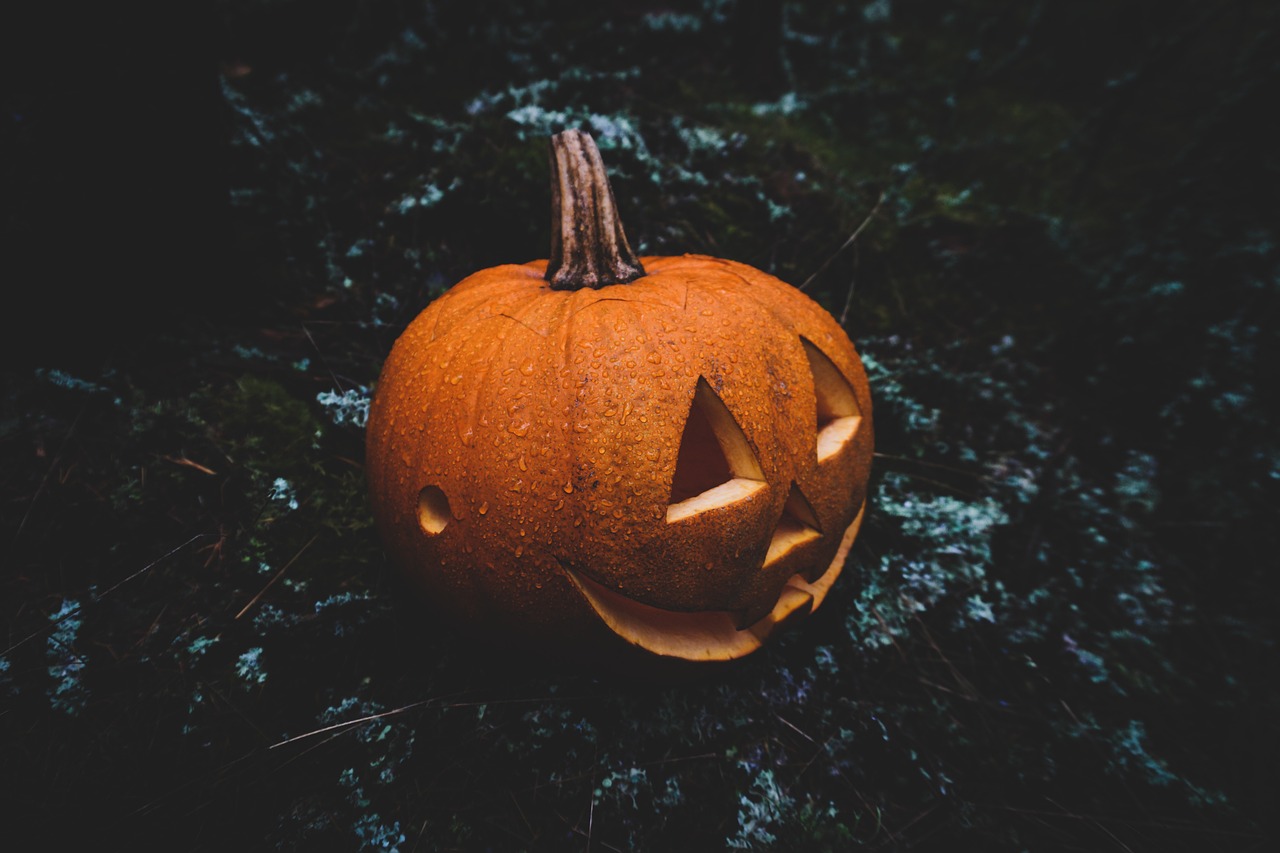
Choosing the Right Materials
When it comes to creating your own DIY lanterns, is a pivotal step that can make or break your project. Imagine standing in your favorite craft store, surrounded by an array of options, each begging for your attention. The materials you select will not only define the aesthetic of your lanterns but will also determine their durability and functionality. So, what should you consider? Let's dive into some popular materials that can elevate your lantern-making game!
First up, we have glass. Glass lanterns can create a stunning visual effect, allowing light to filter through beautifully. They come in various shapes and sizes, from mason jars to elegant vases. However, keep in mind that glass can be fragile, so it's essential to handle it with care. If you're going for a more rustic vibe, you might want to consider using frosted glass or colored glass for a softer glow.
Next, let's talk about metal. Metal lanterns exude a modern and industrial feel. You can find options in materials like wrought iron, aluminum, or even copper. Metal is incredibly durable and can withstand outdoor elements, making it a great choice for garden lanterns. You can also experiment with different finishes—think matte black for a sleek look or brushed copper for a touch of warmth.
Now, if you're leaning towards a more organic and earthy aesthetic, wood is your best friend. Wooden lanterns can bring a cozy, rustic charm to any space. You can use reclaimed wood for an eco-friendly option, which adds character and history to your lanterns. Just be sure to treat the wood properly to prevent decay, especially if you plan to use them outdoors.
Additionally, there are some composite materials that can be a great alternative. Consider using materials like bamboo or even recycled plastics. These options are not only sustainable but also offer unique textures and appearances that can enhance your lantern designs. Plus, they often come in various colors, allowing for more creative freedom.
To sum it up, here are some materials to consider for your DIY lanterns:
- Glass: Elegant and versatile, great for indoor use.
- Metal: Durable and modern, perfect for outdoor settings.
- Wood: Cozy and rustic, ideal for a warm atmosphere.
- Composite Materials: Eco-friendly and unique, perfect for creative designs.
Ultimately, your choice of materials should reflect your personal style and the atmosphere you wish to create. Don’t be afraid to mix and match different elements to achieve a unique look. After all, the beauty of DIY lies in the freedom to express yourself! So, gather your materials, unleash your creativity, and let’s get crafting!
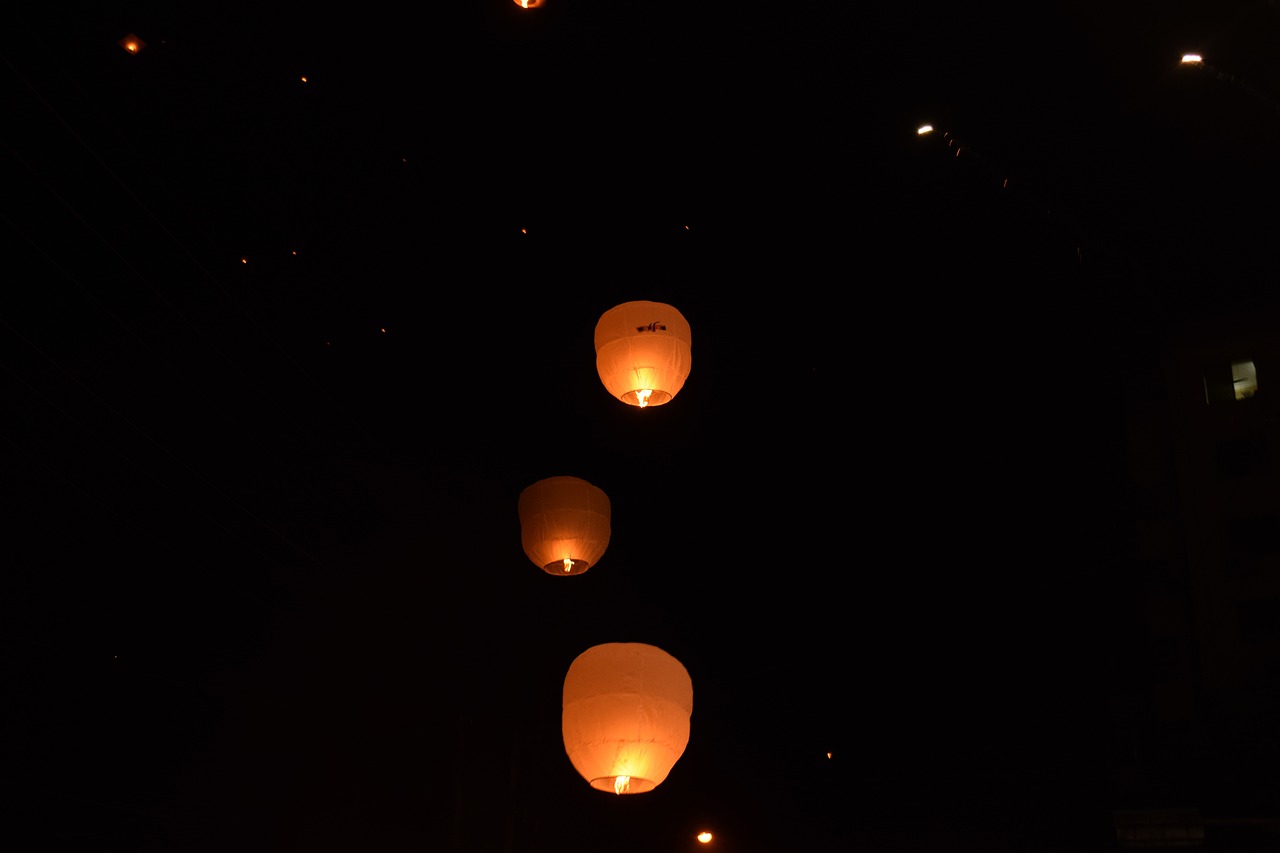
Design Inspirations
When it comes to creating your own DIY lanterns, the possibilities are as vast as your imagination! Whether you're looking to evoke a sense of nostalgia with rustic charm or prefer the sleek sophistication of modern design, there’s a style that will resonate with your personal taste. Think of your home as a canvas, and your lanterns as the vibrant brush strokes that bring it to life. So, how do you choose the right design inspiration? Let’s dive into a few themes that can help you craft the perfect atmosphere!
First up, **rustic lanterns** are a fantastic way to bring warmth and a touch of nature indoors. Imagine a cozy cabin in the woods; that’s the vibe you want to create. Incorporating natural elements such as twine, burlap, and reclaimed wood can truly enhance the rustic aesthetic. Picture a lantern wrapped in jute twine, with a flickering candle inside casting soft shadows against the walls. It’s all about creating that inviting ambiance that makes you feel at home.
To really nail that rustic look, consider using materials that echo the beauty of the outdoors. Think about incorporating twigs, leaves, and stones into your designs. Not only do these elements add an organic touch, but they also tell a story. For instance, a lantern adorned with small pebbles collected from your favorite beach can serve as a beautiful reminder of cherished memories. The natural textures and colors can create a stunning contrast against the warm glow of candlelight, making your space feel both cozy and inviting.
Let’s get creative! You can use a variety of natural elements to enhance the rustic appeal of your lanterns. Consider creating a lantern that features:
- Twigs: Perfect for wrapping around the lantern frame or even using as a base.
- Leaves: Dried leaves can be glued onto the surface for a whimsical touch.
- Stones: Small stones can be placed at the bottom of the lantern for added texture.
These elements not only beautify your lantern but also create a **beautiful, organic look** that complements outdoor settings perfectly. Imagine placing these lanterns around your garden or patio for a magical evening under the stars!
Now, let’s talk about colors. Earthy tones and muted shades work wonders with rustic lanterns. Think deep browns, soft greens, and warm creams. These colors evoke a sense of nature and tranquility, making them ideal for creating a warm atmosphere. You might even consider a color palette that includes:
| Color | Emotion Evoked |
|---|---|
| Deep Brown | Stability and Comfort |
| Soft Green | Calm and Refreshing |
| Warm Cream | Cozy and Inviting |
These colors not only enhance the rustic charm of your lanterns but also create a harmonious balance in your home decor. Imagine lighting up your living room with a few of these beautifully crafted lanterns, casting a warm glow and creating an inviting atmosphere for family and friends.
If rustic isn’t your style, don’t worry! Modern lantern designs can be just as captivating. With clean lines and minimalistic aesthetics, these lanterns can add a touch of elegance to any space. Think about using materials like glass, metal, or even concrete to achieve that sleek look. You can create a stunning centerpiece for your dining table or a chic accent in your living room. The beauty of modern design is its versatility, allowing you to mix and match styles effortlessly.
In conclusion, whether you lean towards the rustic charm of natural elements or the sleek sophistication of modern designs, DIY lanterns can transform your space into a cozy haven. The key is to let your creativity shine and choose designs that resonate with your personal style. So, grab those materials, and let’s get crafting!
Q1: What materials are best for making DIY lanterns?
A1: The best materials include glass, metal, wood, and natural elements like twigs and leaves, depending on your desired style.
Q2: How do I ensure my lanterns are safe to use with candles?
A2: Always use a heat-resistant base, keep flammable materials away from the flame, and never leave lit candles unattended.
Q3: Can I use LED lights instead of candles?
A3: Absolutely! LED lights are a great, safer alternative and come in various styles to suit your design.

Rustic Lantern Ideas
When it comes to creating a cozy atmosphere, rustic lanterns are a fantastic choice. They exude warmth and charm, making any space feel inviting and homey. Imagine walking into a room illuminated by the soft glow of lanterns that seem to tell a story of the great outdoors. To achieve this enchanting look, consider incorporating natural elements that reflect the beauty of nature.
One of the best ways to enhance the rustic appeal of your lanterns is by using materials like twine, burlap, and reclaimed wood. These elements not only add texture but also create a sense of authenticity. For instance, wrapping a glass jar with twine and adding a burlap ribbon can transform a simple container into a stunning lantern. The juxtaposition of the smooth glass and the rough twine creates an eye-catching contrast that draws the eye.
To further elevate your rustic designs, think about incorporating natural elements such as twigs, leaves, and stones. Picture a lantern adorned with small pebbles at the base, or one that features delicate twigs interwoven around its body. These organic touches can create a beautiful, earthy look that complements outdoor settings perfectly. You might even consider using a wooden crate as a base for your lanterns, giving them a grounded presence that enhances the rustic vibe.
Color schemes play a vital role in achieving the desired rustic aesthetic. Earthy tones and muted shades can evoke a sense of nature, perfect for creating a warm atmosphere. Consider using colors like deep greens, warm browns, and soft creams. A simple color palette can make your lanterns feel cohesive and intentional. For example, a lantern featuring a combination of dark wood and soft white light can create a stunning focal point in your living space.
To inspire your creativity, here are some ideas for rustic lantern designs:
- Wooden Lanterns: Use reclaimed wood to build a lantern frame, allowing the light to filter through the gaps.
- Glass Jar Lanterns: Repurpose old glass jars, adding twine and natural embellishments for a charming look.
- Hanging Lanterns: Hang lanterns from tree branches or hooks using jute rope for a whimsical touch.
By blending these elements together, you can create rustic lanterns that not only illuminate your space but also serve as beautiful decor pieces. The beauty of DIY projects is that you can customize them to fit your style perfectly. So, roll up your sleeves, gather your materials, and let your creativity shine!
Q: What materials are best for rustic lanterns?
A: The best materials include reclaimed wood, glass, twine, burlap, and natural elements like twigs and stones. These materials enhance the rustic charm of your lanterns.
Q: How can I make my lanterns safe for indoor use?
A: If using candles, ensure they are placed securely and monitored while lit. Alternatively, consider using LED lights or solar-powered options for a safer, energy-efficient choice.
Q: Can I use these lanterns outdoors?
A: Absolutely! Rustic lanterns can enhance outdoor spaces beautifully. Just make sure to use weather-resistant materials or treat them to withstand the elements.
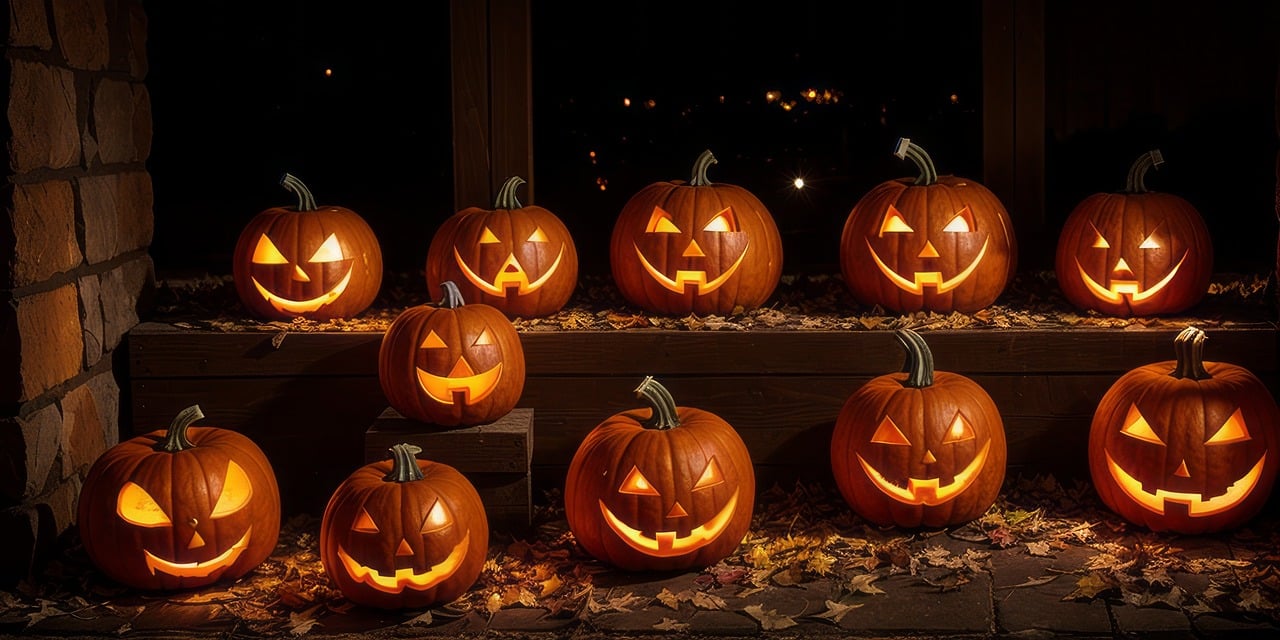
Using Natural Elements
When it comes to crafting rustic lanterns, incorporating natural elements can elevate your designs to a whole new level. Imagine walking into a space where the lanterns not only provide light but also evoke the calming essence of nature. By using materials such as twigs, leaves, stones, and even pinecones, you can create lanterns that are not just decorative but also tell a story of the great outdoors.
One of the simplest ways to achieve this organic look is by utilizing twigs and branches. You can collect these from your backyard or local park, ensuring they are clean and dry. Wrap them around a glass jar or a metal frame to create a lantern that feels like it belongs in a forest. The beauty of this design is that no two lanterns will ever be the same; each will carry its unique character based on the materials you choose.
Additionally, consider adding leaves to your lanterns. You can use dried leaves for a more subdued look or fresh leaves for a vibrant touch. A great technique is to decoupage the leaves onto the surface of your lantern, creating a stunning visual effect when the light shines through. The interplay of light and shadow will create an enchanting atmosphere in your home.
Another fantastic option is to incorporate stones into your designs. You can use small pebbles as a base for your lantern, or even glue them onto the exterior for added texture. This not only enhances the rustic charm but also gives your lanterns a sturdy foundation, making them suitable for outdoor use. The combination of natural textures will draw the eye and invite conversation.
To truly embrace the natural theme, think about how you can incorporate these elements into various settings. For instance, if you're creating a centerpiece for your dining table, consider using a cluster of lanterns made from different natural materials. This creates a cohesive yet visually interesting display. You could even add some moss or floral accents around the base to tie everything together.
In conclusion, using natural elements in your DIY lanterns not only enhances their aesthetic appeal but also connects your home decor to the beauty of nature. Whether you choose twigs, leaves, stones, or a combination of these elements, your lanterns will surely become a focal point in any room. So, gather your materials, let your creativity flow, and watch as your rustic lanterns transform your space into a cozy haven.
- What materials are best for making rustic lanterns? Natural materials such as twigs, leaves, stones, and burlap work wonderfully for a rustic look.
- How do I ensure my lanterns are safe to use with candles? Always use a glass or metal container for candles, and never leave them unattended.
- Can I use artificial materials for my lanterns? Yes, while natural elements are great, you can also use artificial materials for durability and longevity.
- How can I enhance the lighting in my DIY lanterns? Consider using LED lights or fairy lights for a modern twist that is also safe.

Color Schemes for Rustic Designs
When it comes to rustic lantern designs, the choice of color can truly make or break the overall aesthetic. Think of your lantern as a canvas on which you can paint the essence of nature. Earthy tones are your best friends here. Consider shades like deep browns, forest greens, and burnt oranges. These colors not only evoke feelings of warmth but also seamlessly blend with the natural materials often used in rustic decor. Imagine a lantern made from reclaimed wood, painted in a muted olive green, casting a soft glow against a backdrop of stone walls. Isn’t that a sight to behold?
To create a harmonious look, you can also incorporate neutral colors such as cream, beige, or soft grays. These hues serve as a perfect backdrop, allowing the more vibrant colors to pop. For instance, a lantern adorned with twine and accented with a splash of rust-red can create a stunning focal point in your living space. It’s all about balance! You want your lanterns to stand out, but not overshadow the other elements of your decor.
Another fantastic approach is to use a monochromatic palette. This involves selecting one color and using various shades and tints of that color throughout your lantern design. For example, a series of lanterns in different shades of blue can create a serene and cohesive look that draws the eye. You can even add texture by mixing materials; think of a glass lantern with a blue tint paired with a wooden base. The combination can provide both visual interest and a rustic charm that’s hard to resist.
Don't forget about the seasonal aspect of color schemes! As the seasons change, so can your lanterns. In the fall, you might opt for warm oranges and browns, while winter could inspire you to use icy blues and whites. This adaptability allows your rustic lanterns to remain relevant and visually appealing throughout the year.
To summarize, here are some key color schemes to consider for your rustic lantern designs:
- Earthy Tones: Deep browns, forest greens, burnt oranges
- Neutral Colors: Cream, beige, soft grays
- Monochromatic Palette: Various shades of a single color
- Seasonal Variations: Adjust colors based on the time of year
By thoughtfully selecting your color schemes, you can create rustic lanterns that not only illuminate your space but also enhance its overall aesthetic. So, grab those paintbrushes and let your creativity flow!
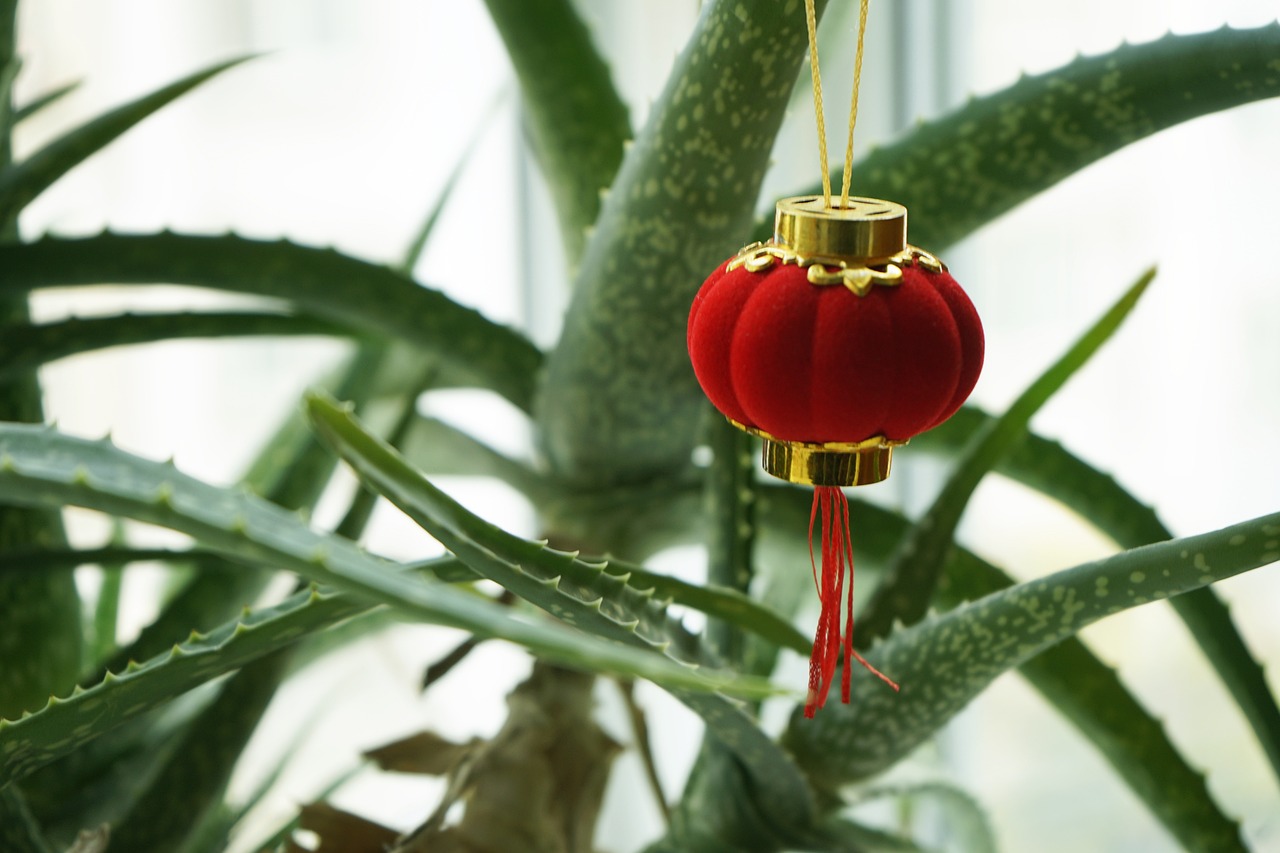
Modern Lantern Styles
When it comes to , the design ethos often revolves around simplicity, elegance, and functionality. Imagine a sleek, minimalist lantern that not only illuminates your space but also serves as a stunning decorative piece. These lanterns typically feature clean lines and a variety of innovative materials that can transform any environment from ordinary to extraordinary. Think of them as the perfect blend of art and utility, much like a well-tailored suit that fits just right.
One of the most appealing aspects of modern lanterns is their versatility. They can easily complement various interior design styles, from contemporary to industrial. For instance, a lantern made of brushed metal with a geometric design can add a touch of sophistication to a chic urban loft. On the other hand, a lantern crafted from glass with minimalist accents can enhance the aesthetic of a Scandinavian-inspired home. The choice of materials plays a significant role in achieving the desired look.
Here are some popular materials commonly used in modern lantern designs:
- Glass: Clear or frosted glass provides a clean, luminous quality that enhances the light source inside.
- Metal: Materials like stainless steel or brass add a modern edge and durability to your lanterns.
- Wood: Incorporating wood elements can soften the modern look, creating a warm and inviting atmosphere.
- Concrete: For an industrial vibe, concrete lanterns can make a bold statement.
In terms of lighting, modern lanterns often utilize LED technology, which offers a variety of benefits. Not only are LEDs energy-efficient, but they also provide a range of color temperatures, allowing you to create the perfect ambiance. You can opt for a cool white light for a crisp, clean look or a warm white light to create a cozy atmosphere. This versatility is akin to having a wardrobe full of outfits, each suited for different occasions.
To truly embrace the modern aesthetic, consider the arrangement of your lanterns. Grouping several lanterns of varying heights can create a visually stunning focal point, whether it's on a dining table, a mantelpiece, or even on your patio. You might even want to experiment with different lighting effects; for example, using colored LED bulbs can add a playful twist to your decor. Just imagine a soft blue glow illuminating your outdoor space during a summer evening gathering—it’s an experience that can elevate any occasion.
As you explore modern lantern styles, remember that the key is to find a balance between form and function. Your lanterns should not only look good but also serve their purpose effectively. With the right design choices, you can create a stunning atmosphere that reflects your personal style while making your space feel warm and inviting.
Q1: What are the best materials for modern lanterns?
A1: The best materials for modern lanterns include glass, metal, wood, and concrete. Each material offers a unique aesthetic and can complement various interior styles.
Q2: How can I choose the right lighting for my lanterns?
A2: Consider using LED lights for their energy efficiency and versatility. You can choose between warm and cool light temperatures to create different atmospheres.
Q3: Can I use candles in modern lanterns?
A3: Yes, you can use candles, but ensure they are placed safely to avoid fire hazards. Opt for LED candles for a safer alternative.
Q4: How should I arrange my lanterns for maximum impact?
A4: Group lanterns of varying heights together for a visually appealing display. Experiment with placement on tables, shelves, or outdoor settings to find what works best.
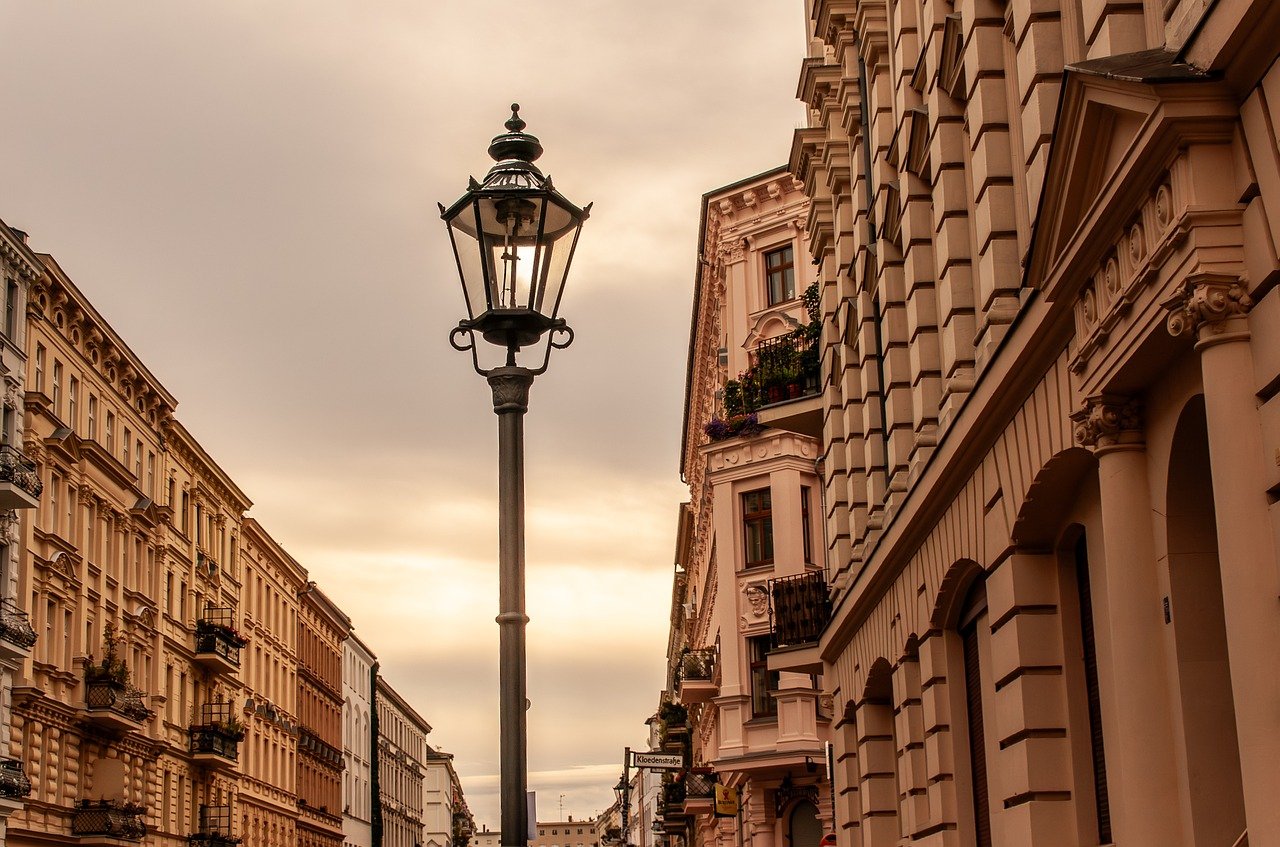
Lighting Options
When it comes to creating a cozy atmosphere with your DIY lanterns, the you choose can make all the difference. The right light can transform a simple lantern into a breathtaking centerpiece that draws the eye and warms the heart. So, what are your choices? Let's dive into some popular lighting options that can elevate your lantern designs.
First up, we have the classic candlelight. There's just something magical about the flickering glow of a candle. It evokes a sense of nostalgia and romance, making it perfect for intimate settings. However, while candles are beautiful, they do come with some safety considerations. You’ll want to ensure that your lantern is well-ventilated and that the flame is contained. Consider using votive candles or tea lights for a safer option, as they are less likely to tip over and can provide a steady light without much risk.
If you're looking for something a bit more modern and energy-efficient, LED lights are an excellent alternative. These lights come in various shapes and sizes, making them incredibly versatile for any lantern design. You can find LED strips that can be wrapped around the inside of your lantern for a stunning effect or small LED bulbs that mimic the look of traditional candles without the flame. Plus, they last much longer and come in different color temperatures, allowing you to customize the ambiance to suit your mood.
| Lighting Type | Pros | Cons |
|---|---|---|
| Candles | Warm ambiance, traditional feel | Fire hazard, requires supervision |
| LED Lights | Energy-efficient, safe, long-lasting | Less traditional feel, may require batteries |
| Fairy Lights | Whimsical, versatile, easy to use | Can be delicate, may require a power source |
Another charming option is fairy lights. These tiny, twinkling lights can add a whimsical touch to your lanterns. They are perfect for creating a dreamy atmosphere, especially during outdoor gatherings or festive occasions. You can easily string them inside your lantern or even wrap them around the outside for an enchanting glow. Just keep in mind that fairy lights typically need a power source, so plan accordingly.
In summary, the lighting you choose for your DIY lanterns can significantly impact their overall look and feel. Whether you opt for the warm, inviting flicker of candles, the modern convenience of LED lights, or the enchanting sparkle of fairy lights, each option offers its unique charm. So, think about the atmosphere you want to create and choose the lighting that best complements your vision. After all, the right light can turn a simple lantern into a stunning focal point that enhances your home decor.
- What is the best type of lighting for outdoor lanterns? - For outdoor lanterns, LED lights or solar-powered options are ideal as they are weather-resistant and energy-efficient.
- Can I use scented candles in my lanterns? - Yes, scented candles can add a lovely aroma to your space, but ensure they are safely contained within the lantern.
- How do I ensure my lanterns are safe? - Always use flame-retardant materials, avoid placing them near flammable items, and never leave candles unattended.
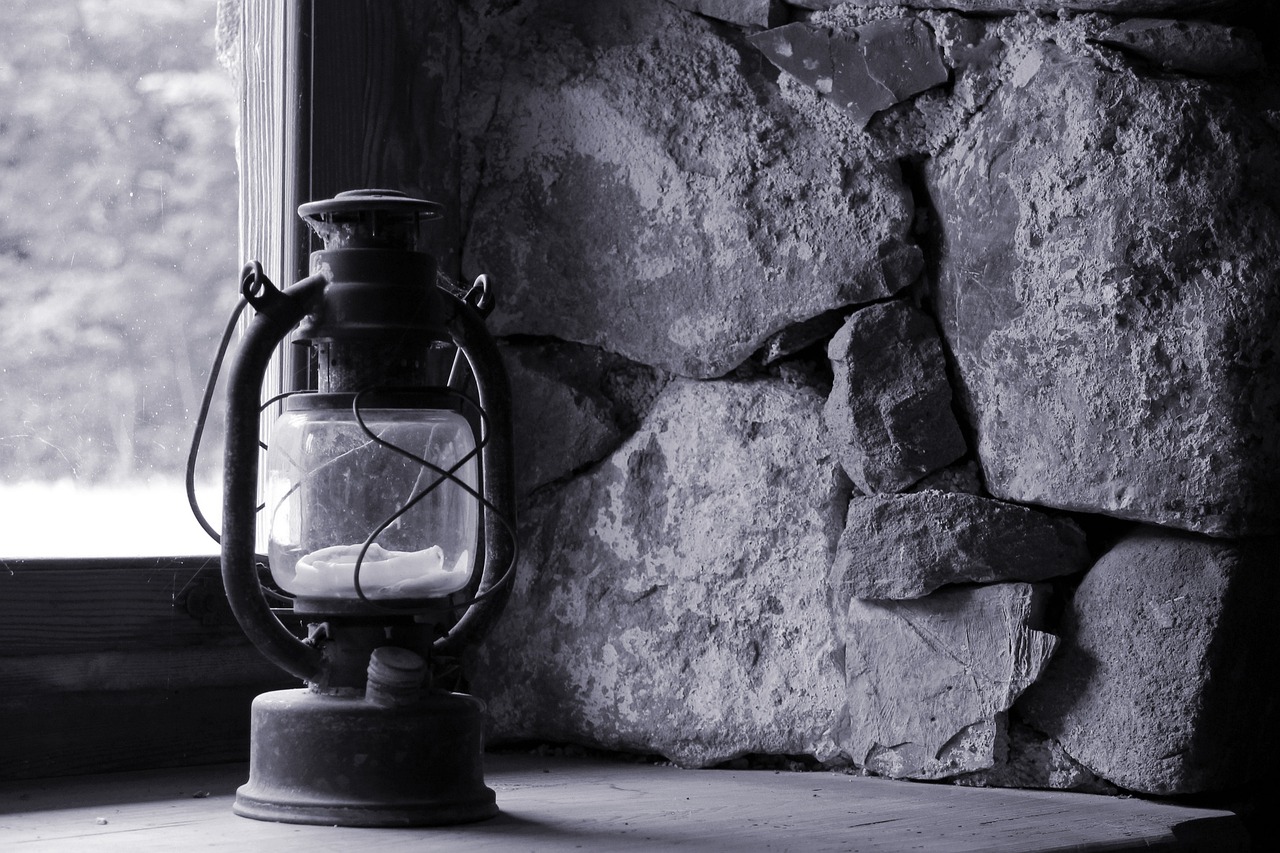
Safety Considerations
When it comes to creating a cozy atmosphere with DIY lanterns, safety should always be your top priority, especially if you're considering using candles. The flickering glow of candlelight can indeed set a beautiful mood, but it comes with its own set of risks that you must navigate. So, how can you enjoy the charm of candlelit lanterns without putting your home at risk? Here are some essential safety tips to keep in mind:
First and foremost, always ensure that your lanterns are made from materials that can withstand heat. For instance, glass and metal are great options, but if you’re using wood or fabric, make sure they are treated to be fire-resistant. You wouldn’t want a beautiful lantern to turn into a hazard just because it’s too close to an open flame!
Moreover, consider the placement of your lanterns. It’s crucial to keep them away from flammable materials, such as curtains, paper, or even your favorite cozy blanket. Think of it as a dance; your lanterns need their space to shine without getting too close to anything that could catch fire. A good rule of thumb is to maintain at least a three-foot distance from any combustible items.
Another important aspect is to never leave burning candles unattended. Picture this: you light a candle in your lantern, step away for just a moment, and suddenly you’re faced with a potential disaster. It’s always best to keep an eye on your lanterns, especially if you have pets or small children around. If you plan to step out of the room, it’s safer to extinguish the flame first.
If you’re looking for alternatives to traditional candles, consider using LED lights. They can mimic the warm glow of candles without the fire risk, making them a smart choice for any DIY lantern project. Plus, they come in various colors and styles, adding an extra layer of creativity to your designs.
Lastly, always keep a fire extinguisher or a bucket of water nearby when using candles. It’s better to be prepared than to find yourself in a sticky situation. Remember, safety is not just about preventing fires; it’s about ensuring that your beautiful DIY lanterns enhance your space without compromising your peace of mind.
- What materials are safest for DIY lanterns? Glass and metal are the safest options as they can withstand heat. If using wood or fabric, ensure they are fire-resistant.
- Can I use regular candles in my lanterns? Yes, but always supervise burning candles and keep them away from flammable materials.
- What are some alternatives to candles for lanterns? LED lights and solar-powered options are excellent alternatives that provide a safe and energy-efficient glow.
- How far should I place my lanterns from flammable items? Maintain at least a three-foot distance from any combustible materials.
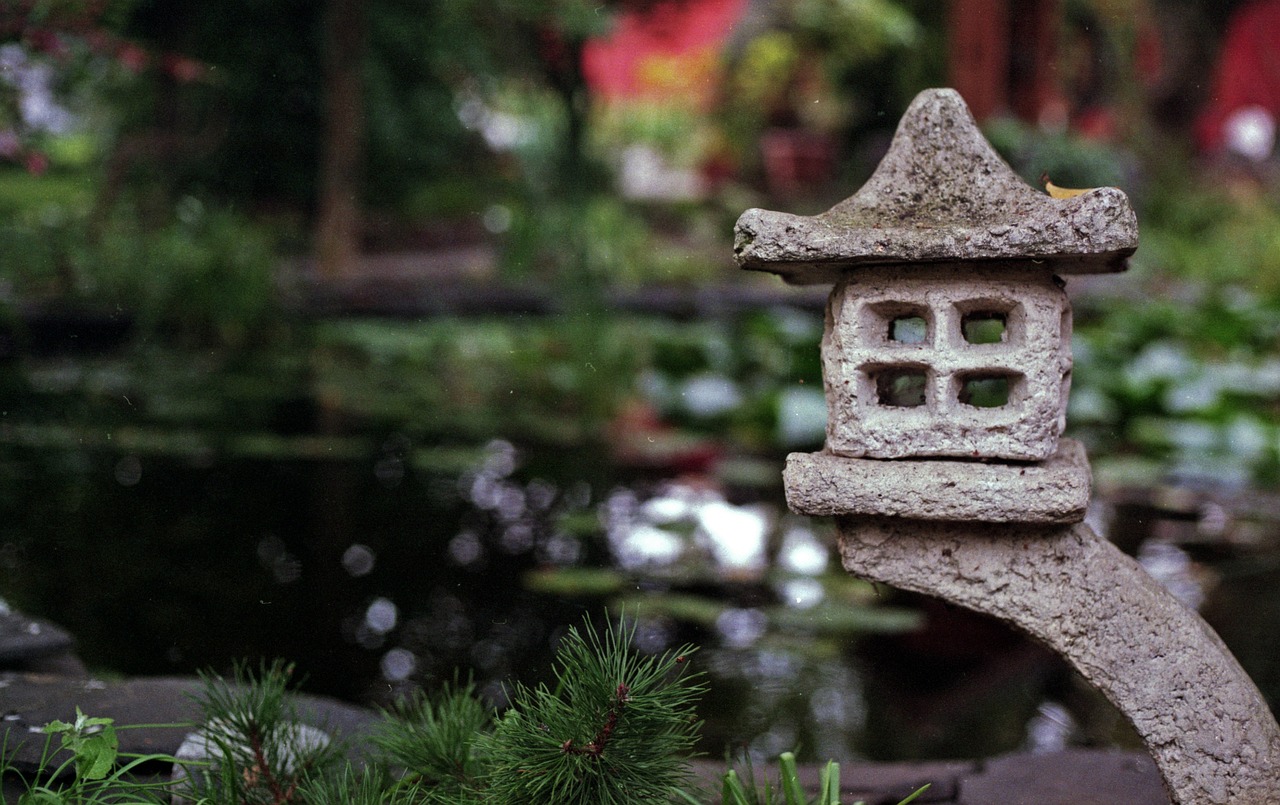
Energy-Efficient Alternatives
When it comes to creating a cozy atmosphere with your DIY lanterns, can make a significant difference, both for the environment and your wallet. Imagine lighting up your space without the guilt of high energy bills or the worry of harming our planet. With the right choices, you can achieve that warm, inviting glow while being eco-conscious.
One of the most popular options for energy-efficient lighting is LED lights. These little wonders are not only long-lasting but also consume a fraction of the energy compared to traditional incandescent bulbs. Picture this: you set up a beautiful lantern display with LED lights, and instead of worrying about replacing bulbs every few months, you can enjoy your enchanting setup for years to come! Plus, they come in various colors and styles, allowing you to customize your lanterns to fit your mood.
Another fantastic alternative is solar-powered lanterns. These lanterns harness the sun’s energy during the day and light up your evenings with a gentle glow. Imagine placing a few of these around your garden or patio; they charge up all day and then illuminate your outdoor gatherings, creating an atmosphere that's both magical and sustainable. Just think about how much you can save on electricity while still enjoying the beauty of your surroundings.
For those who love a touch of whimsy, fairy lights are a delightful option. These tiny, twinkling lights can be wrapped around or placed inside your lanterns to create a dreamy effect. They are usually LED-based, which means they are energy-efficient and can be powered by batteries or USB. Imagine the soft, enchanting glow they provide, making your space feel like a fairy tale come to life!
To sum it up, here are some key benefits of using energy-efficient lighting in your DIY lantern projects:
- Cost-effective: Save money on energy bills.
- Long-lasting: Enjoy your lanterns without frequent replacements.
- Eco-friendly: Reduce your carbon footprint.
- Versatile: Available in various styles and colors to match your decor.
Incorporating these energy-efficient lighting options into your DIY lanterns not only enhances the aesthetic appeal of your home but also aligns with a sustainable lifestyle. So, as you embark on your lantern-making journey, remember that you have the power to create a stunning atmosphere while being kind to our planet.
Q: What are the benefits of using LED lights in DIY lanterns?
A: LED lights are energy-efficient, long-lasting, and available in various colors and styles, making them perfect for DIY lantern projects.
Q: How do solar-powered lanterns work?
A: Solar-powered lanterns charge during the day using sunlight and automatically light up at night, providing an eco-friendly lighting solution.
Q: Can I use fairy lights in my lanterns?
A: Yes! Fairy lights are a great option for lanterns, as they add a whimsical touch and are typically LED-based, making them energy-efficient.
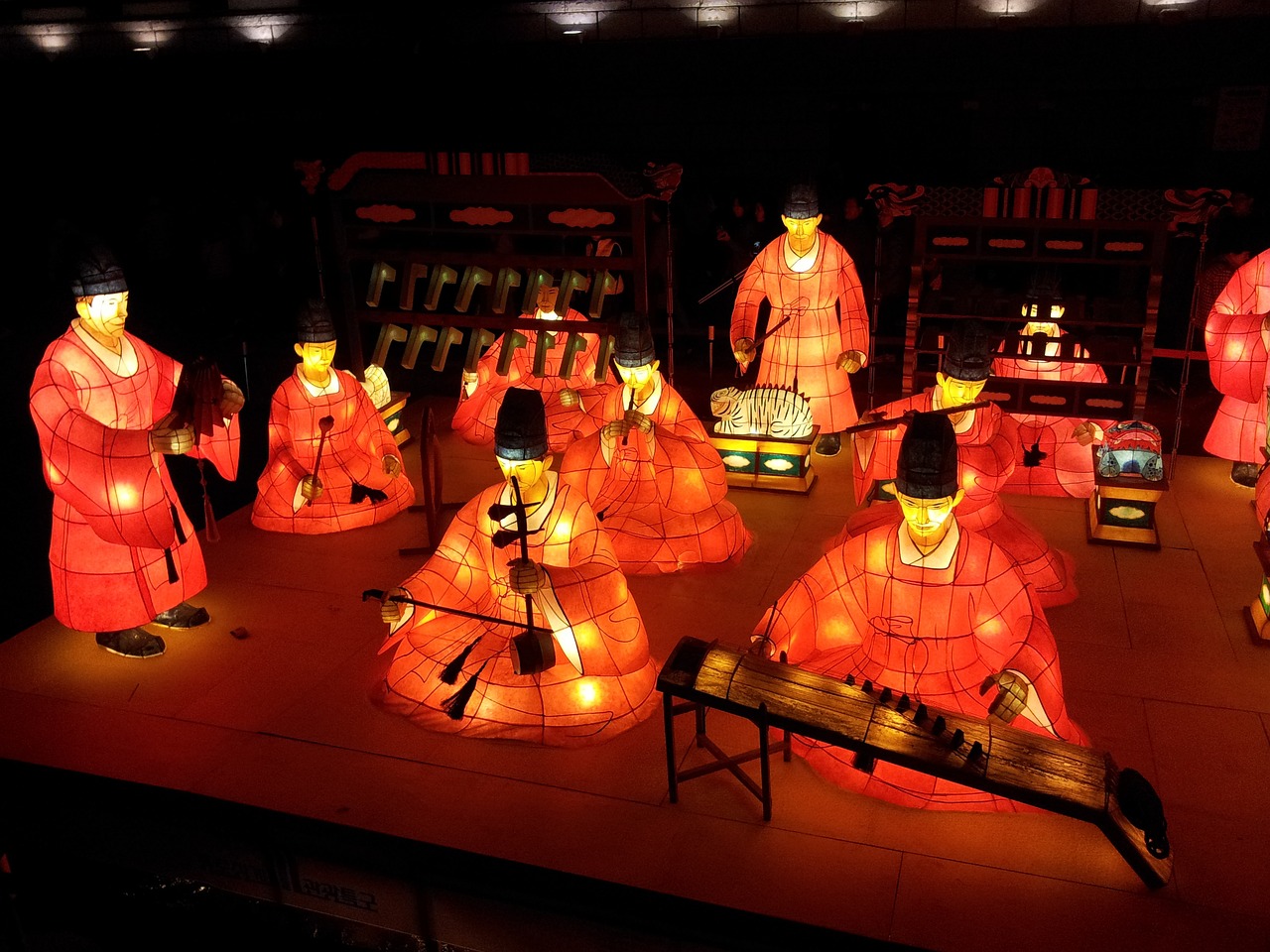
Placement and Arrangement
When it comes to creating a cozy atmosphere with your DIY lanterns, are crucial elements that can make or break the overall vibe of your space. Imagine stepping into a room where the soft glow of lanterns invites you in, creating a warm and welcoming environment. It’s all about finding the right spots to showcase your lanterns, whether you’re indoors or outdoors. So, where should you place them?
First off, consider the functionality of the space. Are you looking to create a relaxing reading nook, a romantic dining area, or perhaps a festive outdoor gathering? Each setting calls for a different approach to lantern placement. For instance, if you’re aiming for a cozy reading corner, positioning a lantern on a side table or a bookshelf can provide the perfect amount of light without overwhelming the space. On the other hand, if you’re hosting an outdoor dinner party, hanging lanterns above the dining table can create a magical ambiance that enhances the evening.
Another important aspect is the height at which you place your lanterns. Hanging lanterns from hooks or tree branches can draw the eye upwards, making your space feel more open and airy. Alternatively, placing lanterns on the ground or low tables creates an intimate setting. To help you visualize this, here’s a simple table comparing different placements:
| Placement Type | Best For | Effect |
|---|---|---|
| Tabletop | Reading Nooks, Dining Areas | Cozy and intimate |
| Hanging | Outdoor Gatherings, Parties | Open and inviting |
| Ground Level | Pathways, Gardens | Welcoming and enchanting |
Don’t forget to think about the arrangement of your lanterns as well. Grouping them in odd numbers, such as three or five, can create a more visually appealing display. You can mix and match sizes and styles to add depth and interest. For example, placing a large lantern at the center surrounded by smaller ones can create a stunning focal point. Also, consider using different heights to create layers, which adds dimension and keeps the eye moving throughout the space.
When arranging lanterns outdoors, be mindful of the surrounding elements. For instance, if you have a beautiful flower bed, placing lanterns along the edges can highlight the blooms while providing soft lighting. Similarly, if you have a patio or deck, consider placing lanterns on the railing or steps to guide guests and create a warm, inviting path. The key is to allow your lanterns to complement the natural beauty of your surroundings.
Lastly, always keep safety in mind. If you’re using candles, ensure they are placed on stable surfaces away from flammable materials. If you’re using LED lights or fairy lights, check that the wiring is safe and secure. With the right placement and arrangement, your DIY lanterns can transform any space into a chic and cozy haven that you and your guests will love.
Q: What types of surfaces are best for placing lanterns?
A: Stable surfaces like tables, shelves, and the ground are ideal. Avoid placing them on unstable or cluttered surfaces to prevent accidents.
Q: Can I mix different styles of lanterns?
A: Absolutely! Mixing different styles can add character to your space. Just ensure they share a common theme or color palette for a cohesive look.
Q: How can I safely use candles in my lanterns?
A: Always place candles on a non-flammable base within the lantern, and never leave them unattended. Consider using LED candles for a safer alternative.
Frequently Asked Questions
- What materials are best for DIY lanterns?
Choosing the right materials is key to creating stunning DIY lanterns. Popular options include glass for a classic look, metal for a modern twist, and wood for a rustic feel. Each material offers unique qualities that can enhance your design vision, so think about the overall aesthetic you want to achieve.
- How can I create a rustic lantern?
To craft a rustic lantern, start by incorporating natural elements such as twine, burlap, and reclaimed wood. You can also use twigs, leaves, and stones to add an organic touch. Don't forget to choose earthy tones and muted shades for your color palette to evoke a warm, inviting atmosphere that complements your home.
- What lighting options should I consider for my lanterns?
When it comes to lighting, you have several options! Candles provide a warm, cozy glow, while LED lights and fairy lights offer a modern and energy-efficient alternative. If you're looking for something eco-friendly, consider solar-powered lanterns that can brighten your space without increasing your energy bill!
- Are there safety tips for using candles in lanterns?
Absolutely! Safety is crucial when using candles. Always place your lanterns on stable surfaces, keep them away from flammable materials, and never leave them unattended while lit. Using candle holders can also help prevent accidents and ensure a safe, beautiful ambiance.
- How should I arrange my lanterns for maximum effect?
The placement of your DIY lanterns can really enhance the atmosphere. Consider grouping them in clusters for a dramatic effect or spacing them out for a more subtle glow. Whether indoors or outdoors, think about the flow of your space and how the light will interact with other elements in the room.



















